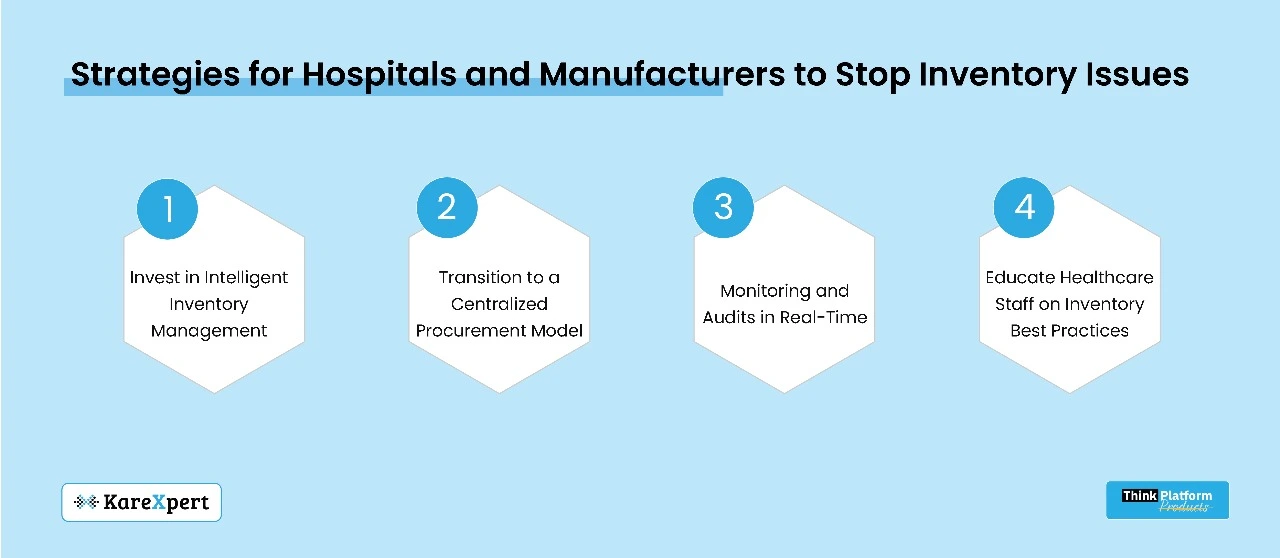Healthcare’s Hidden Nightmare: How Poor Inventory Management Leads to Drug Shortages and Patient Risk

Abstract: The Invisible Crisis of Healthcare Documentation
As hospitals and clinics motivate themselves to provide better patient outcomes, one underlying crisis that tends to go overlooked is the state of inventory management. The healthcare ecosystem is a fragile one, where a single disturbance in supply chains can lead to chronic drug shortages, delays in treatment, and even instances of avoidable deaths.
Hospitals continue to rely on archaic, manual inventory processes that fail to provide visibility, predictive analytics, or automation. These inherent inefficiencies present significant risks for both providers and patients alike — which is part of the reason inventory mismanagement is one of the biggest yet most ignored threats facing the contemporary healthcare landscape.
The Scale of the Problem
1. The Impact of Drug Shortages
– Delayed treatments: Hospitals often run out of key medications, leaving doctors with no choice but to postpone procedures or use make-do substitutes.
– Threat to patient safety: Unavailability of medicine may cause errors in prescriptions, which in turn can lead to adverse patient outcomes.
– Soaring operational costs: Sourcing at the eleventh hour results in exorbitant pricing, and excessive financial strain on hospitals.
2. Inventory Management Practices Remain Stuck in the Past
– Manual stock tracking: The stock in many healthcare facilities is still done on spreadsheets or paper logs, leading to more opportunities for error and oversight.
– No real-time visibility: For hospitals to predict changes in demand and supply accurately, they need real-time tracking.
– Reactive rather than proactive replenishment: Many hospitals place orders only when supplies are depleted, resulting in emergency procurement at premium prices.
How Bad Inventory Management Makes a Healthcare Nightmare
1. Increased Medication Errors
– Stockouts prompt substitutions, creating mismatched prescriptions and patient confusion.
– Pharmacists are also required to dispense other drugs, which may not work for every patient.
2. Disruptions in Critical Care
– Emergency rooms and intensive care units rely on a steady supply of life-saving drugs. A misplaced vial of epinephrine or insulin could mean life or death.
– Due to shortages, surgery schedules are frequently delayed when anesthetics or antibiotics are not available, amplifying risk and frustration for patients.
3. The Financial Fallout for Hospitals
– Increased procurement costs from last-minute purchases.
– More product wasted by overstocking some drugs and running out of others.
– Compliance fines related to drug availability.
The Role of Technology in Fixing Inventory Nightmares
1. Predictive Analytics With AI
– Predicting demand patterns through historical data minimizes abrupt outages.
– AI can also help analyze seasonal trends and possible disease outbreaks, so that hospitals can stock what they need.
2. Automated Inventory Tracking
– Say goodbye to human errors with real-time inventory tracking.
– Automated restocking maintains a steady supply of essential goods.
– Interconnected hospital networks can share inventory through cloud-based systems, which reduces redundancy.
3. Incorporation within the Supply Chains
– Just-in-time ordering through direct integration with pharmaceutical suppliers.
– RFID and barcode scanning provide a seamless and efficient way to track inventory from procurement through to dispensing.
– Automated alerts inform managers before stock levels become critical.
Strategies for Hospitals and Manufacturers to Stop Inventory Issues

1. Invest in Intelligent Inventory Management
– Move from manual inventory curves to an AI-driven, automated system for hospitals to stay afloat.
– Cloud-based solutions enable coordination among hospital branches.
2. Transition to a Centralized Procurement Model
– Having a central purchase system curbs waste and helps avoid overstocking on non-essential drugs.
– Group Purchasing Organizations (GPOs) can negotiate improved pricing with vendors.
3. Monitoring and Audits in Real-Time
– Daily audits can help prevent unnoticed shortages before they impact patient care.
– Alerts based on artificial intelligence let decision-makers know before a crucial stock gets depleted.
4. Educate Healthcare Staff on Inventory Best Practices
– Many shortages are caused by poor communication between departments.
– It is important for pharmacists, procurement managers, and medical staff to receive training on efficient inventory use.
Case Studies: Hospitals that Did It Right
1. AI Inventory Model at Cleveland Clinic
– Forecasting analytics cut drug shortages by more than 60 percent.
– Optimized stock levels resulting in a million in procurement cost savings.
2. RFID at Singapore General Hospital
– Utilized RFID for real-time tracking of drug movement.
– Eliminated overstock and reduced drug wastage by 30%.
Final Thought: It’s Time to Make a Move
There is no more time for hospitals to look at inventory management as an afterthought. The costs of drug shortages are not only financial — they affect the lives of patients. Through AI-driven forecasting, automated tracking, and smart supply chain integration, hospitals can ensure that every critical drug is available when it’s most needed.
The question is not if your hospital should embrace sophisticated inventory systems — meaning, a real-time solution for preventing a preventable shortage from descending into a crisis — the question is, given the state of flux, how long can you afford to wait?
